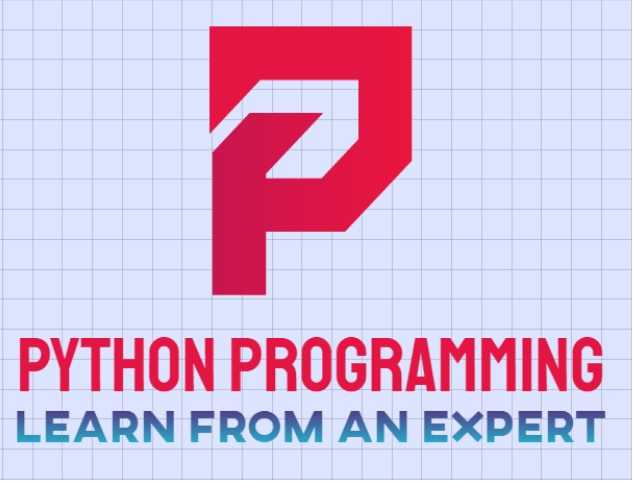Python Programming

Now a day the demand of Python developers is increasing day by day. Python is very interesting and easy to learn language. Learning of Python Programming is as easier as C language. Python is widely used programming language that lets you work more quickly than other programming languages.According to the Developer Survey by StackOverflow, Python was one of the most in-demand technologies of 2018, 2019, and 2020. As of 2020, it is ranked as the world's 4th most popular programming language among professional software developers as well as the first most wanted programming language.
In this course you will learn all the concept of python programming from basic level to advanced level with theory and practical.
Python Programming
Introduction to Python Programming
What is Python Programming?
History of Python Programming
Features of Python Programming
Why to learn Python Programming
Application of Python Programming
Setup of Python Programming
Getting Python
Installation of Python
Getting started with the first Python program
Running the first Python Program
Variables and Data types
What is a variable?
Declaration of variable
Variable assignment
Data types in Python
Checking Data type
Data types Conversion
Python programs for Variables and Data types.
Python Identifiers, Keywords, Reading Input, Output Formatting
What is an Identifier?
Keywords
Reading Input
Taking multiple inputs from user
Output Formatting
Python end parameter
Operators in Python
Operators and types of operators
1. Arithmetic Operators
2. Relational Operators
3. Assignment Operators
4. Logical Operators
5. Membership Operators
6. Identity Operators
7. Bitwise Operators
Python programs for all types of operators
DECISION MAKING
Introduction to Decision making
Types of decision making statements
Introduction, syntax, flowchart and programs for
- if statement
- if…else statement
- elif statement
Loops
Introduction to loops
Types of loops
- for loop
- while loop
- infinite loop
- nested loop
Break, continue and pass statement
Python programs for all types of loops
NUMBERS
Number Type Conversion
Random Number Functions
Trigonometric Functions
Mathematical Constants
STRINGS
Accessing Values in Strings
Updating Strings
String Special Operators
Built-in String Methods
LISTS
Python Lists
Accessing Values in Lists
Updating Lists
Deleting List Elements
Basic List Operations
Built-in List Functions and Methods
TUPLES
Accessing Values in Tuples
Updating Tuples
Deleting Tuple Elements
Basic Tuples Operations
Built-in Tuple Functions
Difference between list and tuple
DICTIONARY
Accessing Values in Dictionary
Updating Dictionary
Delete Dictionary Elements
Properties of Dictionary Keys
Built-in Dictionary Functions and Methods
DATE AND TIME
What is Tick?
What is TimeTuple?
Getting Current Time
Getting Formatted Time
Getting Calendar for a Month
FUNCTIONS
Defining a Function
Calling a Function
Passing by Reference versus Passing by Value
Ways to write function
Types of functions
Anonymous function
Recursive Function
MODULES
What is a module?
Creating a module
The import Statement
The ‘from’ import Statement
Renaming a module
Using the dir() function
The ‘from’ import * Statement
Locating Modules
FILES I/O
Printing to the Screen
Opening and Closing Files
The open Function
The file Object Attributes
The close() Method
Reading and Writing Files
The write() Method
The read() Method
MORE OPERATIONS ON FILES
EXCEPTIONS
What is Exception?
Handling an Exception
The except Clause with No Exceptions
The except Clause with Multiple Exceptions
The try-finally Clause
List of Standard Exception
Raising an Exception
Argument of an Exception
CLASSES AND OBJECTS
What is an Object?
What is a Class?
Creating a Class
Creating an object
Self in Python
__init__ method
Examples
REGULAR EXPRESSION
What is a REGULAR EXPRESSION?
Metacharacters
match() function
search() function
re.match() vs re.search()
findall() function
split() function
sub() function
GUI Programming
What is a GUI PROGRAMMING?
Tkinter Programming
Tkinter Widgets
Building Your First Python GUI program with Tkinter
You will get certification after the completion of this course
This course will assist you with learning Python Programming from basic level to advanced level without any preparation in a handy way, as an initial step to turn into a talented Data Scientist, Machine Learning Engineer, Data Engineer, Data Analyst. You don't need to know anything about Python before beginning. Taking up this Programming preparation will assist you with getting lucrative employment offered by huge organisations/companies.
According to the Developer Survey by StackOverflow, Python was one of the most in-demand technologies of 2018, 2019, and 2020. As of 2020, it is ranked as the world's 4th most popular programming language among professional software developers as well as the first most wanted programming language. In an independent 3rd party survey, it has been found that the Python programming language is currently the most popular language for Data Scientists worldwide. This claim is substantiated by IEEE, which tracks programming languages by popularity. According to them, Python tops the list of the most popular programming.
Python Job Profiles:








